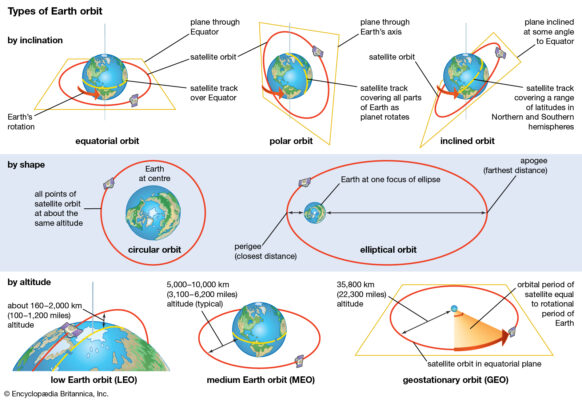- Home
- Prelims
- Mains
- Current Affairs
- Study Materials
- Test Series
12th July 2021
ELECTING A SPEAKER AND DEPUTY SPEAKER
Recently, it was noted that the Maharashtra Legislative Assembly has been without a Speaker for most of 2021 and Lok Sabha and several state Assemblies are without a Deputy Speaker.
Election of Speaker





- The Speaker is elected by the Lok Sabha from amongst its members.
- The Lok Sabha elects another member to fill the vacancy whenever the office of the Speaker falls vacant.
- The date of election of the Speaker is fixed by the President.
- The Speaker remains in office during the life of the Lok Sabha.
- The Speakers has to vacate his office earlier in any of the following three cases:
- If he ceases to be a member of the Lok Sabha;
- If he resigns by writing to the Deputy Speaker; and
- If he is removed by a resolution passed by a majority of all the members of the Lok Sabha
- When a resolution for the removal of the Speaker is under consideration of the House, he cannot preside at the sitting of the House.
- It is noted that whenever the Lok Sabha is dissolved, the Speaker does not vacate his office and continues till the newly-elected Lok Sabha meets.
- The Speaker is the head of the Lok Sabha, and its representative.
- He is the guardian of powers and privileges of the members, the House as a whole and its committees.
- He is the principal spokesman of the House, and his decision in all Parliamentary matters is final.
- He derives his powers and duties from three sources i.e. the Constitution of India, the Rules of Procedure and Conduct of Business of Lok Sabha, and Parliamentary Conventions.
- He maintains order and decorum in the House for conducting its business and regulating its proceedings.
- He adjourns the House or suspends the meeting in absence of a quorum.
- He presides over a joint setting of the two Houses of Parliament.
- He decides whether a bill is a money bill or not and his decision on this question is final.
- The Deputy Speaker is also elected by the Lok Sabha itself from amongst its members.
- The Deputy Speaker performs the duties of the Speaker’s office when it is vacant.
- He also acts as the Speaker when the latter is absent from the sitting of the House.
- It should be noted here that the Deputy Speaker is not subordinate to the Speaker.
- The Deputy Speaker is entitled to a regular salary and allowance fixed by Parliament, and charged on the Consolidated Fund of India.


- When an object travels at a horizontal speed of about 28,000 km/hr or more, it goes into orbit once it is above the atmosphere.
- The satellites need to reach that threshold speed in order to do orbit Earth and such a satellite would be accelerating towards the Earth due to gravity.
- Any object travelling slower than 28,000 km/hr must eventually return to Earth.
- It allows space travellers to experience a few minutes of “weightlessness”.
- It implies that while the suborbital vehicles will cross the ill-defined boundary of space, they will not be going fast enough to stay in space once they get there.
- The main difference between orbital and suborbital flight is thespeed at which a vehicle is traveling.
- An orbital spacecraft must achieve what is known as orbital velocity, whereas a suborbital rocke
- The orbital velocity is thespeed that an object must maintain to remain in orbit around a planet.
- t flies at a speed below that.
- A suborbital rocket does not have the power to achieve orbit and it will fly up to a certain height that depends on its speed, and then come back down once its engines are shut off.

- It would provide increased flight access for design innovation and experimental manipulationdue to high projected flight rates.
- It would also allow for human-tended experiments, much like the traditional zero-g aircraft, with rapid access to these payloads before, during, and after launch.
- It would be the potential for less bureaucracy than is typically experienced with government space access.
- The access to commercial suborbital spaceflight has the potential to open up a new realm in research and development.
- The consignment of Fazil mango was exported by APEDA registered DM enterprises, Kolkata and imported by Al Jazira group, Bahrain.
- It is special among all the mango varieties regarding its size and weight.
- It is commonly grown in Malda district of West Bengal.
- It is large in size and weighs up to 700-1500 grams.
- The amount of fiber in mango is very less and that too little is found near the peel.
- It gets its name from Fazli Babu who is associated with Fazal Bibi of Arapur village.
- In Bengal, the production of Fazli mango is more in the areas along the banks of Mahananda and Kalindi rivers.
- It is a sign used on products that have a specific geographical origin and possess qualities or a reputation that are due to that origin.
- A sign must identify a product as originating in a given place in order to function as a GI.
- The TRIPS prescribes minimum standards of protection of GIs and additional protection for wines and spirits.
- India has taken legislative measures by enacting the Geographical Indications of Goods (Registration and Protection) Act, 1999.
- It defines Geographical Indications as an indication which identifies such goods as agricultural goods, natural goods or manufactured goodsas originating, or manufactured in the territory of a country, or a region or locality in that territory.
- An application for the registration of a GI is to be made to the Registrar of Geographical Indications in the form prescribed under the Gi Act, 1999.
- A Geographical Indication is registered for a period of 10 years and the registration may be renewed from time to time for a period of 10 years at a time.
- India today has attained top 3rd global ranking in terms of research publications and global number 9 in the quality of research publications.
- India's global ranking in the quality of research papers has improved from number 14 to number 9.
- There is need for focusing on increasing numbers of beneficiaries in human resource related schemes like MANAK, INSPIRE, Doctoral and post-doctoral Fellowships, and other schemes.
- In 2022, DST will target for the launch of 7,500 STI based Start-Ups, 750,000 students of 6-10 classes participating in the MANAK Award programmes.
- Under the Vigyan Jyoti Programme, the DST will target 75,000 girl students getting benefit of the scheme by 2022.
- There has been an increase in the number of resident patents filed, number of Full Time Equivalent (FTE) researchers and number of women scientists.
- It is aimed at leveraging the research strength of DST’s different Autonomous Research & Development Institutions working in the field of science and technology.
- S&T Strategic Planning: It encompasses medium- and long-term science and technology development, including medium-and long-term planning and five-year planning on S&T.
- S&T Programs: It consists of major S&T 3 projects, key technology support programs, high-tech R&D projects, basic research projects, basic conditions for S&T projects, and international technology cooperation projects.
- S&T Projects: The experts are considered to have more of a right to speak, because they better understand basic research and research in cutting-edge technologies.
- S&T Policy: The policies that are closely related to the concerns of research institutes and universities, such as the “four skills” policy and university science park policy, are likely to benefit from experts’ opinions.
- The extensive discussions were held on bilateral trade and investment and economic cooperation in the areas of Food Processing, Textiles, Leather, Railways, Start-ups and promotion of SMEs.
- The bilateral market access issues and non-tariff barriers were discussed to facilitate trade and investment.
- The progress on the outcomes of India-EU leaders Summit in Porto, Portugal was reviewed.
- India raised the issues of Mutual recognition of COWIN Vaccine Certificate and opening up of travel restrictions, longer duration of Business Visas and portability of social security benefits of Indians working in Italy.
- It reiterated the vision laid down by the Prime Ministers of India and Italy, under the Plan of Action adopted in 2020 to promote energy transition, leveraging technology and climate partnerships.
- The two Prime Ministers appreciated the deep civilization ties between the two countries and welcomed the high degree of convergence in the political, economic and strategic interests of the two countries.
- The two Prime Ministers underlined the need to intensify cooperation in high technology, clean energy and energy sector development, infrastructure, food processing.
- They agreed to promote innovative financial schemes capable of supporting bilateral investments.
- The two Prime Ministers welcomed the steady strengthening of defence cooperation between the two countries and recognized the importance of regular defence exchanges between the two countries.
- They underscored the need to further expand defence engagement through greater two-way collaboration and technology cooperation, co-development and co-production.
- The two Leaders concurred that the Covid-19 pandemic calls for an inclusive multilateral approach to health protection, especially in the framework of the United Nations and the World Health Organization.
- They welcomed the progress made under India-Italy Science and Technology Cooperation and noted with satisfaction the implementation of various S&T activities under India-Italy Executive Programme of Cooperation.
- It suggested that the Italian Space Agency (ASI) and the Indian Space Research Organization (ISRO) should implement their cooperation by expanding some areas of common interest.
- Both sides support a comprehensive approach in preventing and combating terrorism, based on respect for human rights and fundamental freedoms, the rule of law and international law.
- They stressed the importance of the Indo-Pacific region as a fundamental area for connecting Asia and Europe.
- The leaders acknowledged the potential of new international organizations such as the Coalition on Disaster Resilient Infrastructures (CDRI) and the International Solar Alliance (ISA).
- Both leaders underlined the importance of enhancing cooperation in the tourism sector to encourage and facilitate the visits of tourists to each other’s country.
- Italy and India areimportant trading partners in key sectors such as finance, railway development, fashion industry and automobile manufacturing.
- In 2019, trade volume between the two nations reached 9.52 billion euros, with Italy emerging as India’s fifth largest trading partner in the EU.
- The Italian Foreign Direct Investment to Indiais expected to reach $2 billion euros in 2020.
- It is time for India and Italy to acknowledge the deep geopolitical potentialof their partnership and act accordingly.
- TheIndo-Pacific, at one end, is becoming the leading route for international maritime trade, and the Mediterranean Sea, on the other, is the natural point of arrival for ship cargos arriving from Asia.
- Italy is not only present in the Mediterranean, but also extends itsprojection in the Red Sea up to the coasts of Somalia with either naval bases or naval vessels in cooperation with European and NATO forces.
- It is one of the most prominent mangroves species found in all mangrove formations in India.
- It is a salt-secreting and extraordinarily salt-tolerant mangrove species that grows optimally in 75% seawater and tolerates >250% seawater.
- It is among the rare plant species, which can excrete 40% of the salt through the salt glands in the leaves.
- It extraordinary feature is its capacity to exclude salt entry to the roots.
- It reports the assemblage of a 456.6 Mb of the estimated 462.7 Mb A. marina genome (98.7% genome coverage) in 31 chromosomes derived from 88 scaffolds and 252 contigs.
- The percentage of genomes in gaps was 0.26%, thereby proving it to be a high-level assembly.
- The A. marina genome assembled can be considered as a reference-grade genome reported so far for any mangrove species globally and the first report from India.
- It identified 31,477 protein-coding genes and a “salinome” consisting of 3246 salinity-responsive genes and homologs of 614 experimentally validated salinity tolerance genes.
- The study reported identification of 614 genes, including 159 transcription factors, which are homologous to the genes that were functionally validated for salinity tolerance in transgenic systems.
- They are a unique group of species found in marshy intertidal estuarine regions and survive a high degree of salinity through several adaptive mechanisms.
- They only grow at tropical and subtropical latitudes near the equator because they cannot withstand freezing temperatures.
- They are the only trees in the world that can tolerate saltwater, excreting the excess salt through their leaves.
- They are important resources for the coastal region and are of great ecological and economic value.
- They form a link between marine and terrestrial ecosystems, protect shorelines, provide habitat for a diverse array of terrestrial organisms.
- They stabilize the coastline, reducing erosion from storm surges, currents, waves, and tides.
- They are hotbeds for animal life, both below water and above ground and this biodiversity makes ecosystems more resilient to disease and death.
- They are prolific sequesters of carbon dioxide and are therefore integral for combatting climate change.
- Shrimp Farming: It is fuelling the clearing of mangrove forests.
- The shrimps are raised in large deposits of waste, bits of feed, pesticides, antibiotics, and chemicals which are often siphoned off or washed out into the ocean, harming neighboring ecosystems.
- Sea Level Rise: The rising sea levels, caused by the climate crisis, also pose a significant threat to mangrove forests.
- The rising sea levels wash away mud, depriving mangroves of the soil they thrive in and eventually leading to the mangroves dying from oxygen deprivation.
- Invasive Species: They are threatening mangroves and are looking to undermine their ability to regenerate themselves and impact their unique wildlife varieties.


- It is a homegrown vaccine of Cuba.
- It is a conjugate vaccine in which the virus antigen, the receptor-binding domain (RBD), is chemically bound to the tetanus toxoid.
- It is found effective when delivered with a booster shot of Soberana Plus.
- Cuba will become the first Latin American country to manufacture and produce a vaccine against Covid-19 after approval.
- It is delivered through a three dose regimen i.e. two shots of Soberana 2 and one of Soberana Plus taken in a 0-28-56 day regimen.
- It is developed by the Finlay Institute in partnership with the Centre for Molecular Immunology and the National Bio preparations Centre.
- It is a type of protein vaccines which implies that it is made up of a protein derived from the virus, which then binds to human cells to trigger an immune response.
- It is the only kind of “conjugate vaccine” that combines the virus’s receptor-binding domain with a deactivated form of tetanus in order to boost the immune response.
- Rising Oil Prices: The rising prices of imported crude oil the taxation of refined fuel within the country are the two main reasons for rising oil prices.
- India depends on oil imports to meet more than 80% of its domestic requirement.
- The prices of the Indian basket of crude oil have gone up from less than $20 a barrel in April 2020 to around $65 a barrel as of March 2021.
- It shows that every 10% increase in oil prices adversely affects India i.e. economic growth falls by 20 basis points (that is, 0.20 percentage points) and the inflation rate goes up by 40 basis points.
- Worries of Unemployment: A low labour force participation rate undermines a country’s overall productivity and well being because fewer people are making themselves available for economic activity.
- The participation rate was quite low in India even before Covid because only about 43% of the people in the working-age group were looking for work while in China and Indonesia this proportion was 76% and 69%, respectively.
- India’s unemployment rate is so much higher than other Asian countries and India’s high unemployment rate is despite a low labour force participation rate.
- The data shows that the total number of people employed in the Indian economy today is over 5% less than the number of people employed before the pandemic.









 Latest News
Latest News
 General Studies
General Studies